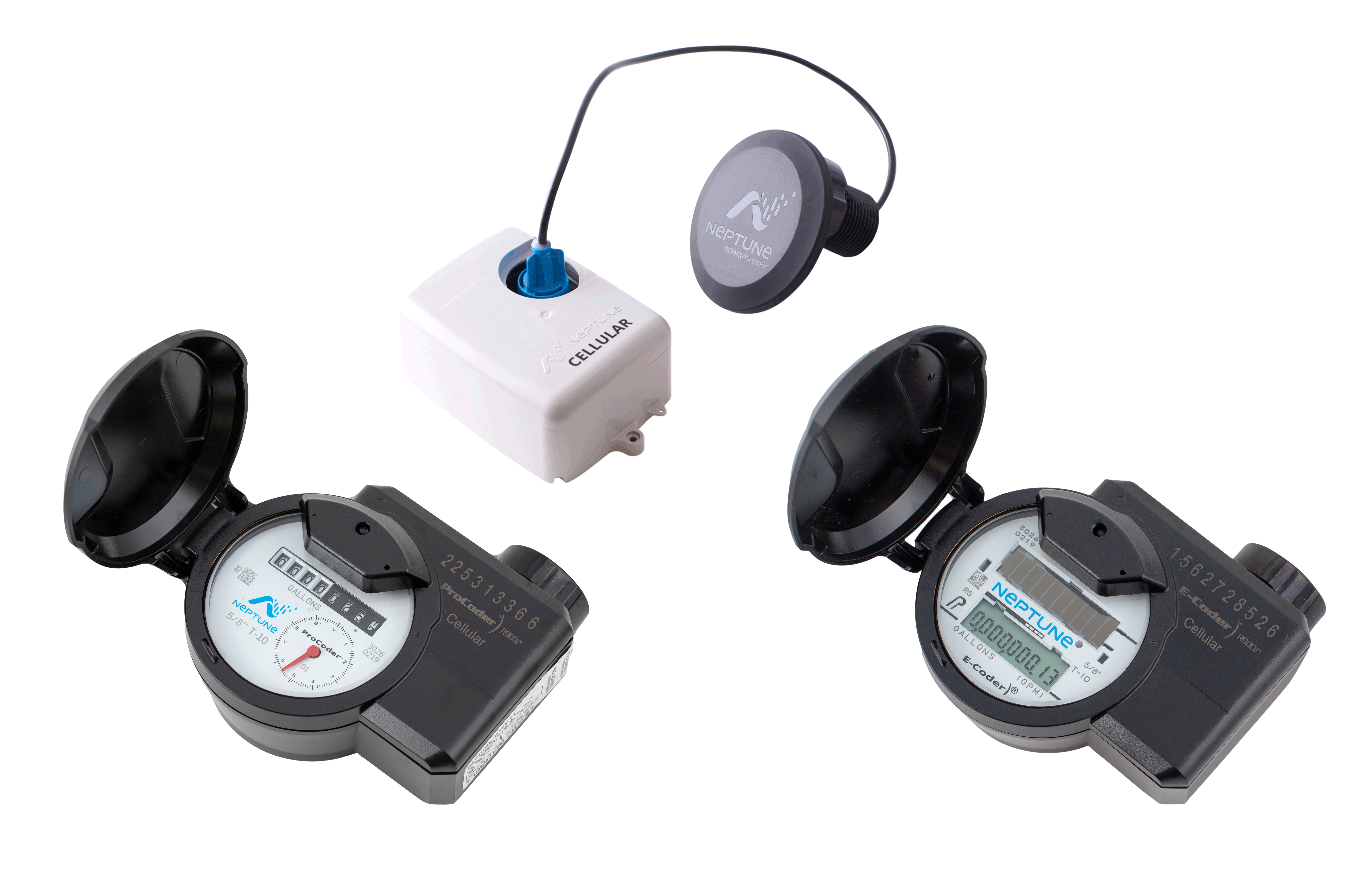Today, cellphones are everywhere, revolutionizing communication by providing instant access to information and transforming the way we stay informed. But go back just a few decades and most of us remember it was an ocean of landlines and pay phones, which we thought was all the communication technology we needed. The technology that powers cellphones can be essential to an integrated metering solution and it’s important to recognize the significant advancements that have been made to make connectivity more consistent and data transmission more efficient. Today, Neptune cellular endpoints, when integrated as part of the R900 System, help water utilities migrate to Advanced Metering Infrastructure (AMI) easily and quickly to achieve their reading goals.
A Short History of Cellular Technology

The first successful cellphone call was made on April 3, 1973, by Martin Cooper, an engineer for Motorola, in New York City. The phone weighed two and a half pounds, was a foot tall, took 10 hours to charge and could only be used for 20 to 30 minutes. Fortunately, today’s phones are smaller and much more powerful, and the benefits we see in our personal lives also translate to the creation of AMI.
The second generation of cellular connectivity, 2G, first introduced the ability to transfer data using cellular networks in the early 1990s, hinting at the true capabilities of cellular technology in the utility space. With the advent of 3G in the early 2000s, the always-connected cloud computing and streaming that we’re accustomed to today came to the forefront.
Once 4G was widely adopted and LTE/LTE-M was introduced into the ecosystem, devices could be continuously connected to the internet, creating the interconnected cellular systems that are so necessary to AMI. Now Neptune cellular devices give utilities peace of mind, offering exceptional battery life of 20 years, and consistent network access to all major cellular providers in the US and Canada, even in areas that are harder to reach. Their ability to transmit various forms of water flow data allows them to communicate with our Neptune 360 management software, unlocking valuable insights for water utilities. All that data can be used to bill more accurately and better track how a water system is functioning, from flow rate to temperature measurements and pressure readings, and so much more.

Benefits to AMI
Modern cellphone applications require voice, text and data, and usage can be very high, an average of 23 GB per month per device according to a study by Ericsson. AMI devices on the other hand have different needs. Information, command requests, and in some cases, packets of data transmitted at regular intervals, only use 400 to 500 KBs of data per month.
Cellular AMI is different from traditional mobile devices. The endpoint is stationary and does not need to spend a lot of time on the network, because it only sends small data packets on a periodic basis. Because of this, LTE-M is the best technology choice for a battery-powered cellular device and is why Neptune offers this technology as an option in our R900 System. The technology is known to be cost effective and sustainable, designed for enhanced battery life, long range connectivity and to support firmware and software updates over the air throughout its lifecycle.
However, cellular has some limitations that can pose unique challenges for water utilities. Coverage is broad but still limited by where cellular carriers provide service. As demand for service keeps growing, fewer and fewer areas will have limited coverage as providers up their capabilities. The other challenge, which is harder to resolve, is that service can be impacted by topography and terrain, as the cellular connectivity is dependent upon tower line of sight and signal propagation. This is not unique to cellular; that’s why careful studies are needed before a system-wide AMI installation is put in place.
To overcome those limitations, at Neptune we offer a wide array of complementing communications technologies that can all work seamlessly together to ensure the most coverage possible. When we design an AMI rollout with our utility partners, we tailor a solution to best fit every environment.
Developments on the Horizon
As we look into the future, some key technological developments dominate the discussion but have limited relevance in the realm of AMI. One of the most interesting developments of the past few years is Private Cellular Networks, which are typically 5G LTE powered. They’re most suitable for phones, tablets and vehicles, but the high cost of deployment, overall network management and power consumption make them not ideal for battery powered AMI devices.
There has also been a lot of buzz over Satellite Deployment connections – like Starlink – where a constellation of satellites in low earth orbit provides a signal to areas not often covered by land cellular connections. However, we’re still in the infancy of that technology as the number of orbiting satellites necessary for reliable connection at all times of the day makes this option prohibitively expensive. There is also some concern among various groups that filling space with thousands of satellites can pose unforeseen risks to future space exploration, astronomy and space pollution.
Advancement in cellular technology has significantly transformed AMI applications, offering enhanced connectivity, improved data accuracy, and greater operational efficiency. Neptune values innovation and we will continue to find and utilize technologies that make our customers’ jobs and operations easier.
As the industry continues to evolve, it is crucial for stakeholders to stay abreast of these technological developments to leverage their full potential. By embracing these innovations, organizations can not only optimize their AMI systems but also drive sustainable growth and deliver superior value to their customers. The future of AMI applications looks promising, with cellular technology playing a pivotal role in shaping the landscape of smart utilities.
Learn more about the industry’s history with cellular. Watch our webinar where we discuss this topic as a part of our CONNECT webinar series.
Don’t Want to Miss a Post?
Subscribe here to be notified when new information is published.